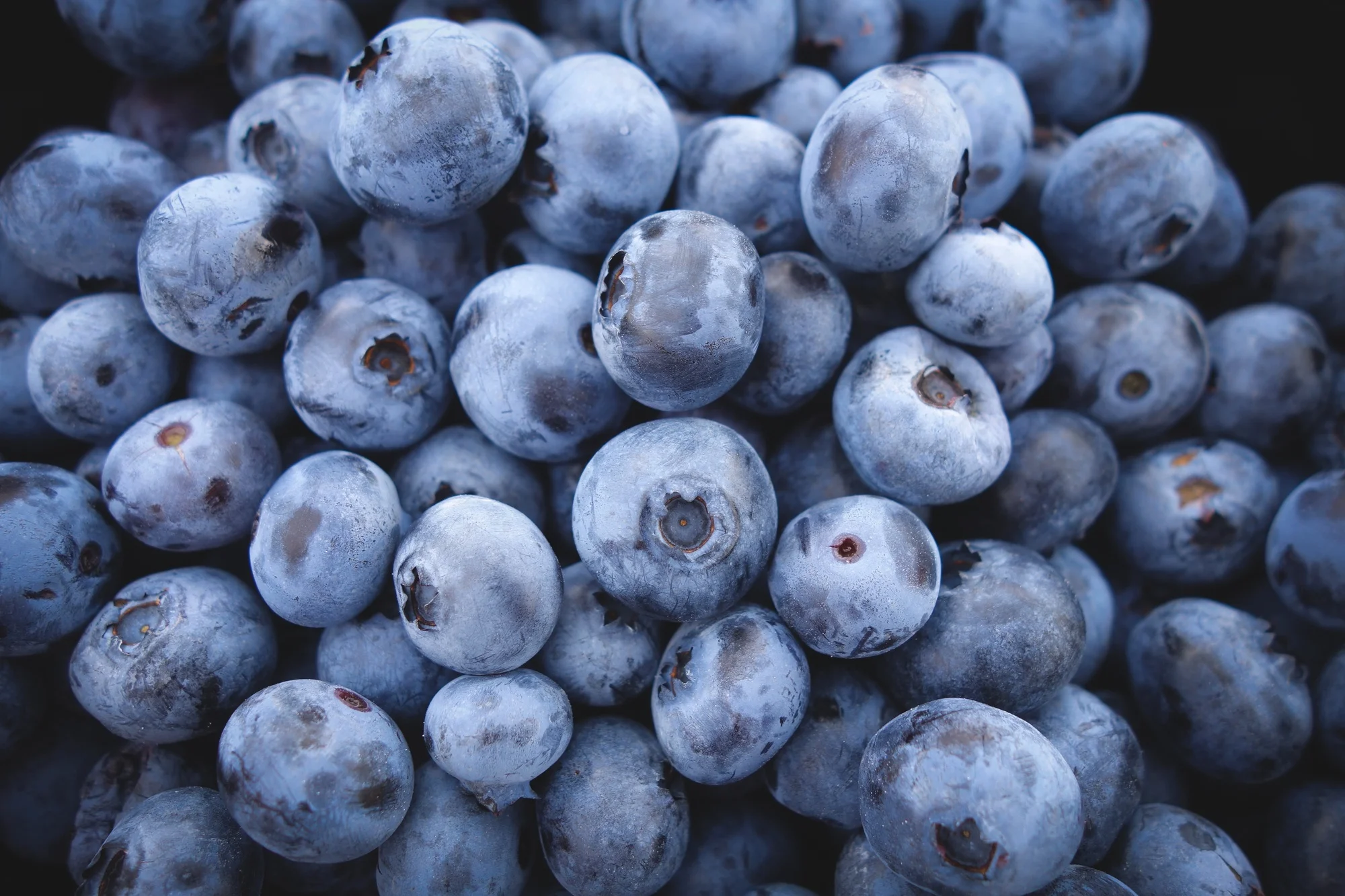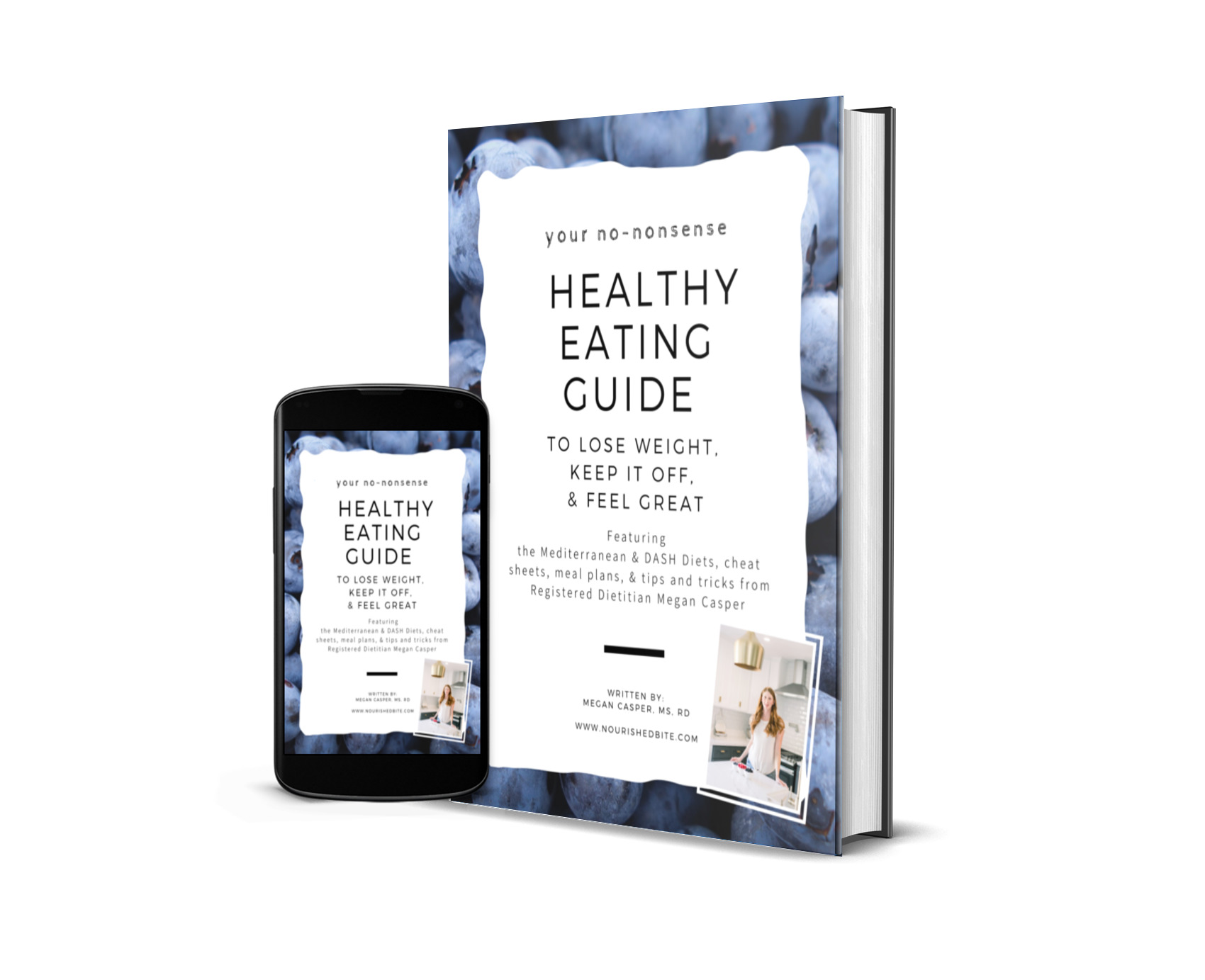How Much Protein Do You Need Post-Workout?
/By Denine Marie, of Healthy Out of Habit
You've just finished a great strength training workout. It might even feel like a small miracle that you made it to pilates class today, considering your crazy schedule and overwhelming desire to sleep in an extra hour. But hey, you did it!
But now what do you eat?
Ideally, after sculpting those muscles, you want to eat something that packs a powerful punch—nutritionally speaking. So, what does that mean, exactly?
Post-workout, your body is primed to absorb amino acids for repairing and developing muscle, and carbohydrates to stimulate insulin release, and restore glycogen reserves. You don't want to miss out on the chance to maximize your workout by ditching your recovery meal. That´s just a waste of your valuable time, blood, sweat. . . and even tears.
To make the most of your training, boost your muscle repair and quickly bounce back to the real world, we need to talk protein. Today we're discussing how much protein for general health and strength training, the timing of protein after workouts, and which foods are naturally packaged with protein.
PROTEIN 101
Proteins are made up of building blocks called amino acids. Think of amino acids as the Legos of life—although way less expensive. Your body needs a variety of blocks to build everything in your body. These tiny blocks build and repair muscle tissue, produce hormones, boost immune health, move oxygen through the blood and grow fabulous long locks of hair. There are 22 total amino acids, and our body cannot make 9 of those (the essential amino acids), so we need to get those from food.
It is essential—as the name implies—to get all 9 essential amino acids from food, so that the body doesn't start breaking down muscle to extract the amino acids it needs to survive and thrive. Food provides all of the amino acids you need, yet you do need to know where to find them.
After a resistance or strength training workout, the hormones responsible for breaking down muscle are elevated. To recover quickly and nourish your body, cells and muscles, your body craves nutrients needed to grow and repair muscle, reduce fatigue, and minimize risk of injury. If you nourish your cells with protein, the body continues to make new proteins for at least 24 hours after your workout as a result of increased sensitivity to the proteins you eat in food. Now, that's maximizing a workout!
Just so you know, protein will not bulk up your muscles like a bodybuilder. However, a bodybuilder´s killer weight lifting routine certainly will. Adding protein to your diet tones, tightens and powers your muscles, creating lean body mass which is more efficient at burning calories 24-hours a day! Post-workout protein boosts your performance at the gym by repairing damaged proteins, supporting immune function, promoting lean muscle mass, and “adaptively remodeling” the proteins in muscles, bones, tendons, and ligaments.
Eating protein is about providing your body with the nutrients it needs to be strong, do your best and feel your best. It also keeps you feeling full for longer periods of time—and less hangry after workouts!
HOW MUCH PROTEIN?
So, what is the magic number of grams most women need?
The Recommended Dietary Allowance for daily protein promoting general health is 0.8 grams per kg body weight or 0.35 grams per pound of body weight per day. Even that number is debatably low for supporting repair, remodeling, and protein turnover, with nutrition experts recommending ranges well above that.
If you want to do even more math, you could factor your protein needs as a percentage of your total caloric intake. The recent Scientific Report from The 2015 Dietary Guidelines Advisory Committee reported that both the Healthy US-Style and the Mediterranean-Style dietary patterns provide about 18% of calories from protein. For a woman who eats 1,800 calories per day, that's 324 calories from protein, or 81 grams. The Dietary Guidelines for Americans from 2010 recommends between 10% to 35% of daily calories from protein.
The recreational athlete needs require between 0.5 to 0.8 grams per pound of body weight per day to support new muscle development and recovery. If you just started a strength training regimen, your needs will be slightly higher during the first week of training as compared with those already in the groove.
Most protein-muscle recovery studies are conducted on males; therefore, confirming a precise number for post-strength training protein needs for women is not a perfect science. The joint position statement from the Academy of Nutrition and Dietetics, Dietitians of Canada, and the American College of Sports Medicine, recommends eating 20 - 30 grams of protein during or after exercise. They suggest eating about 0.14 grams per pound body weight after exercise and again every 3 to 5 hours over multiple meals. For example, a 145 lb woman would need 20 grams of protein.
One point to keep in mind—more protein does not equal more muscle. The only way to sculpt those gorgeously toned legs even faster is to sweat it out more often. In fact, eating more than 40 g of protein post-workout, has not been shown to be effective in recover and repair. In general, consuming too much protein is not only inefficient, but potentially dangerous, as excessive protein intake is linked to osteoporosis, certain cancers, and heart disease.
Lastly, when protein increases in the diet, water needs increase as well. Drink plenty of water pre-workout, during and post-workout.
TIMING OF PROTEIN
The body does not store extra protein as muscle, protein or amino acids, which is why we need to consume protein throughout the day—and not just after hitting the weights. For optimal recovery, evenly distribute your protein intake across breakfast, lunch and dinner so the body has a sufficient pool of amino acids available for use.
The precise timing of your post-workout meal is somewhat of a heated debate. The widely cited recommendation to consume your post-workout recovery meal within 15 to 60 minutes of your workout to maximize muscle repair and growth doesn't take into account your workout routine, pre-workout meal, overnight fast, your nutrient reserves, or your fitness level. Generally, if you haven't eaten for 3 or 4 hours before your workout, you're going to want to eat something as soon as possible.
Instead of fixating on the timing of your post-workout meal, focus on the best foods to fuel your body. tweet this
The most important point is to plan what you want to eat after your workout—well before you start your workout. The last thing you need after a killer pilates class is to be unprepared when the ice cream truck rolls by.
PACKAGING OF PROTEIN
It´s not just about eating more protein. It's the whole package. Instead of thinking about eating more protein in isolation, think about the overall profile of how that protein is packaged. Does it come with fiber? Is there a high water content? Does it contain phytonutrients? Does it offer minerals? You want to get more than just the protein out of the deal. . . right?
By eating whole foods—containing the natural proportions of macros, micros, fiber, phytochemicals and any other bioactive compound we have yet to discover—you eat protein just as nature intended it. The carbohydrates are used as energy sources and the healthy fats promote satiety after eating. The overall package is necessary to refuel, recover and rebalance your body.
TYPES OF PROTEIN-RICH FOODS
Without getting too deep into the types of protein, you should know that there are two types of protein—complete and incomplete. Animal-based foods—such as chicken, beef, milk, eggs, yogurt and cheese—are considered complete proteins, containing all 9 of the essential amino acids you need from food. These are touted as high-quality sources for muscle recovery. Researchers suggest that whey protein—found in milk—stimulates muscle repair and growth due to its rapid digestion and amino acids profile, in particular leucine.
Now, before you grab a chicken leg as you leave the gym, keep in mind that plants contain protein, too. Foods—such as lentils, nuts, seeds, veggies, whole grains, beans, and algae—all contain protein. Each plant food, itself, does not contain all 9 essential amino acids, with the exception of soy. However—and this is the exciting part—if you mix and match plant proteins in your diet, you get all the essential amino acids you need. You do not need to eat all 9 essential amino acids in one meal. By eating a wide variety of plant foods over the course of a day or week, you can get all the amino acids you need. Those amino acids are then stored in your amino acid pool for when you need them!
In a nutshell, the latest research suggests that plant foods are beneficial in preventing and reversing chronic diseases, and should therefore form the foundation of our diet. Getting the bulk of our nutrition from whole plant foods allows for the flexibility to add meat, fish, eggs and dairy as complements to the diet according to personal preference and lifestyle.
For six tasty ideas new ideas of what to eat post-workout, click here.
Healthy Out Of Habit provides a peek into the food, health, and lifestyle habits of Mediterraneans, and applies these ancient traditions to modern life. Written by Denine Marie, a Registered Dietitian Nutritionist, writer, consultant and former New Yorker turned Mediterranean currently living in Barcelona, Spain. She provides a unique perspective on food, nutrition, family and healthy lifestyle specializing in online nutrition education and public health promotion.







